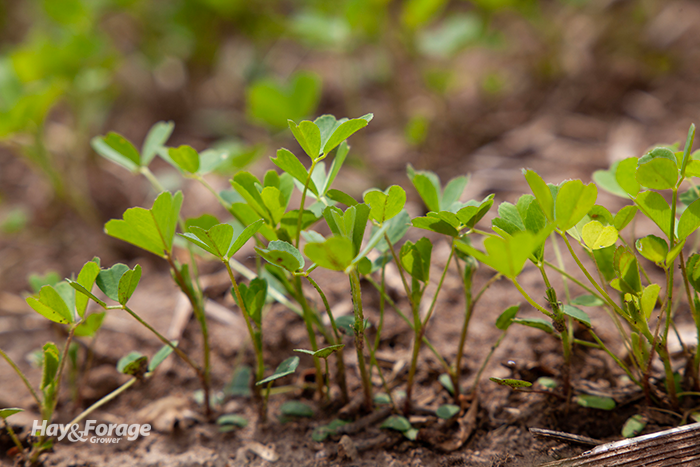
Proper care and nutrition for the human infant or bovine calf is often pontificated upon as a critical step toward the optimum development of the young adult or cow. In other words, the future is only as bright as the health and performance of a population’s young. It’s difficult to argue with that mantra.
After years of research, this same line of thinking can easily be transferred to the alfalfa field. Those new seedings that will go into the ground next spring demand some special attention if the established stand is to reach its full potential. One mistake or oversight can be costly for the years to come.
There are a variety of things that can occur in the seeding year that will impact the future stand. Let’s begin with field selection. Even if a field has adequate drainage, fertility, and an optimum soil pH, other soil-related factors such as autotoxicity or herbicide carryover can severely limit stand development. Both of these factors may not prevent stand establishment, but they can stand as barriers to reaching a field’s maximum yield potential by reducing initial plant counts and/or causing abnormal plant and root development.
Alfalfa autotoxicity and herbicide carryover are easily avoided by simply considering recent field history. Sure, you can roll the dice, but most often you’re going to lose. That’s how casinos stay in business.
Protect the money crop
Competition with young alfalfa seedings needs to be minimized. Potential competition can come from weeds or a companion crop, reducing alfalfa stand density.
Weed pressure needs to be dealt with early and often with a timely herbicide application. Roundup Ready alfalfa varieties lend themselves to convenient weed control in the spring and perhaps a follow up application in the fall, if needed. Nonglyphosate herbicide programs can also be effective but have a narrower application window.
Cereal companion crops don’t typically limit alfalfa stand establishment if seeding rates are kept relatively low; however, the cereal needs to be harvested early (for example, boot stage). Mature cereals limit the amount of sunlight into the canopy, which hinders alfalfa growth. Using ryegrass as a companion crop can be extremely competitive with alfalfa, especially when seeded at rates exceeding 2 pounds per acre.
Hop to it
One of the greatest threats to a new alfalfa seeding comes from potato leafhoppers. This common alfalfa insect pest thrives on young alfalfa plants and provides another reason why it is important to get cereal companion crops harvested early so that an insecticide can be applied.
Wisconsin research has shown that potato leafhopper infestations in the seeding year reduced alfalfa plant size and yield for the life of the stand, even if future leafhopper infestations were controlled. Alfalfa permanently lost 0.25 to 0.5 tons per acre during subsequent years and yield loss was greatest when a companion crop was used in the seeding year. This underscores the importance of relentless field scouting and timely insecticide applications for new seedings.
The message here is to take care of the baby. Alfalfa growers have and always will occasionally lose new alfalfa seedings because of extreme weather conditions, but seeding-year stands shouldn’t be compromised because of questionable field selection or neglect. Mistakes made during the seeding year will haunt alfalfa productivity for the life of the stand, which most likely will be shortened.

